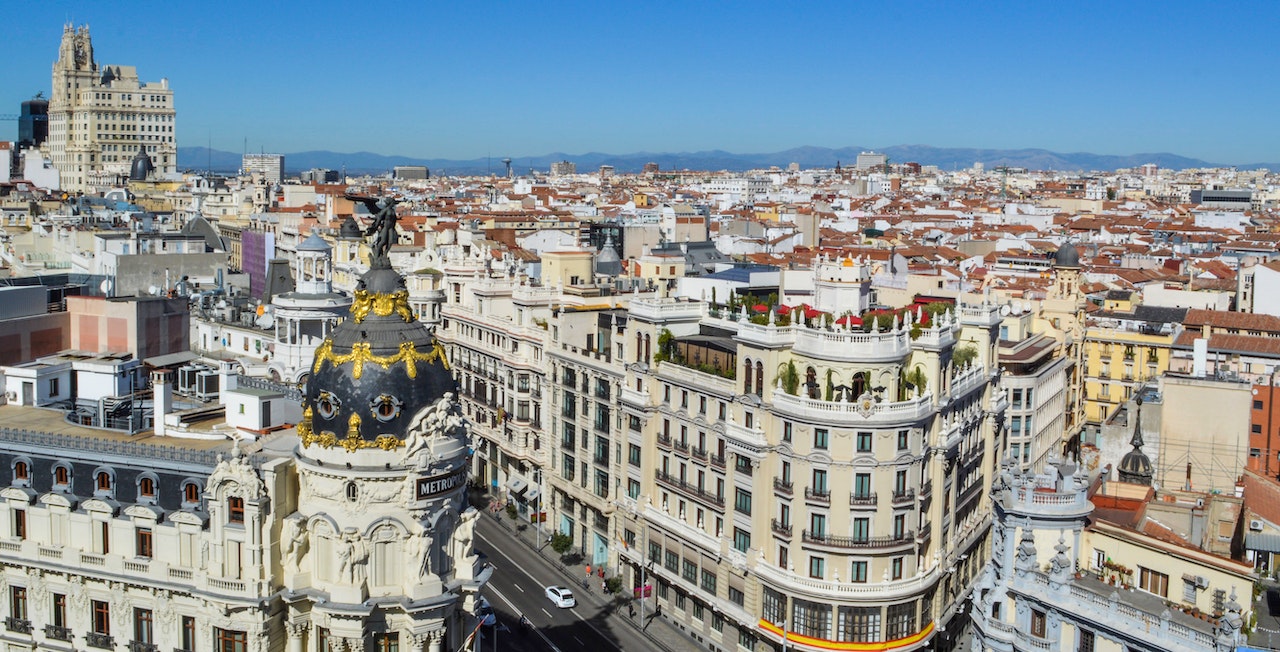Barcelona and Madrid are two vibrant and culturally rich cities in Spain, each with its own unique charm and character. While both cities offer a diverse range of attractions and experiences, there are several key differences that set them apart. We’ve highlighted five key differences between Barcelona and Madrid, to help you learn more about each city’s essence.
Barcelona
Madrid
TABLE OF CONTENTS
Architectural Style
One of the most noticeable differences between Barcelona and Madrid lies in their architectural styles. Barcelona is renowned for its distinctive modernist architecture, spearheaded by the famous architect Antoni Gaudí. The city is home to iconic landmarks such as the breathtaking Sagrada Familia, Park Güell and Casa Batlló, which showcase Gaudí’s organic forms and intricate designs. In contrast, Madrid features a more diverse architectural landscape, blending historic structures like the Royal Palace and Plaza Mayor with contemporary buildings like Cuatro Torres Business Area. Madrid’s architecture reflects a mix of Renaissance, Baroque and neoclassical influences, offering a rich tapestry of styles.
It’s also worth noting that while Barcelona is relatively low-rise. Madrid is home to higher buildings, and some of the tallest in Europe – although these tend to be outside of the old city center.
Cultural Identity
Barcelona and Madrid boast distinct cultural identities, shaped by their historical backgrounds and regional characteristics. Barcelona, as the capital of Catalonia, holds a strong sense of regional pride and identity. The Catalan language is widely spoken, and the region has its own traditions, cuisine and customs. The city’s vibrant cultural scene includes events like the Festa Major de Gràcia and La Mercè festival, showcasing Catalonia’s unique cultural heritage. Madrid, on the other hand, serves as the capital of Spain and embodies a more centralized Spanish identity. It is known for its lively nightlife, traditional tapas culture and world-class art museums like the Prado and Reina Sofia. Madrid’s cultural identity reflects the diversity and fusion of various Spanish regions.
Geography and Climate
The geographical location and climate of Barcelona and Madrid also contribute to their differences. Barcelona enjoys a Mediterranean climate with mild winters and warm summers, making it a popular coastal destination. Its beautiful beaches, such as Barceloneta and Sitges, draw locals and tourists alike. In contrast, Madrid is located in the heart of Spain, far from the coast, resulting in a continental climate with hot summers and cold winters. Madrid’s landscapes are characterized by vast plains and arid surroundings, offering a different outdoor experience but one that can also be just as sublime in its own way.
Sports Rivalry
Sports play a significant role in Spanish culture, and Barcelona and Madrid have long been arch-rivals in various athletic disciplines. The most prominent rivalry is between their football clubs: FC Barcelona and Real Madrid CF. The rivalry between these two teams, often referred to as “El Clásico,” is one of the most intense and highly anticipated matches in the football world. The rivalry extends beyond football and permeates other sports, creating a passionate and spirited atmosphere whenever these teams compete.
Pace of Life
Barcelona and Madrid also differ in terms of their pace of life and overall vibe. Barcelona tends to be more laid-back and relaxed, reflecting the influence of its coastal setting. The city’s residents often enjoy a leisurely lifestyle, savoring long meals, and embracing the concept of “la sobremesa” which means lingering at the table after a meal. In contrast, Madrid exudes a more fast-paced and dynamic energy. As the political and economic hub of Spain, the city buzzes with activity, with people often engaged in bustling schedules and a lively social scene. Madrid’s “madrileño” lifestyle embodies a sense of hustle and bustle, showcasing the city’s energetic spirit.
What about the similarities?
So those are some differences but we’d remember that Barcelona and Madrid also aren’t completely unrelated. Here are a few traits that tie the two cities together, like second cousins.
- Great nightlife – that starts and finishes very, very late compared to many other countries.
- Culinary innovation – some of the finest restaurants in Europe, or even the world, are in both cities.
- An energetic start-up scene – both cities are two of Europe’s top start-up hubs.
- Rich history – both Barcelona and Madrid have an incredibly rich history, marked by their stunning architecture and world-class museums. This also means picturesque historical day trips are available from each city.
- Affordability – compared to other major European cities, like London, eating out and going about your daily business can be relatively affordable (that said, it is true that rent is also high in both places).
- Fiestas – both cities have a rich programme of events – from the neighborhood level to internationally-renowned festivals attended by thousands. And if you’re one of those folk who likes Primavera Sound then remember it’s now running in both cities.
In conclusion, Barcelona and Madrid offer distinct experiences shaped by the unique characteristics of each city. Whether you prefer the artistic marvels of Gaudí in Barcelona or the mix of historic and modern influences in Madrid, both cities have much to offer visitors and residents alike. Explore more of Barcelona’s unique architecture with our Gaudí Segway Tour for some pleasingly distinctive sites that you won’t find in Madrid, or anywhere else.






